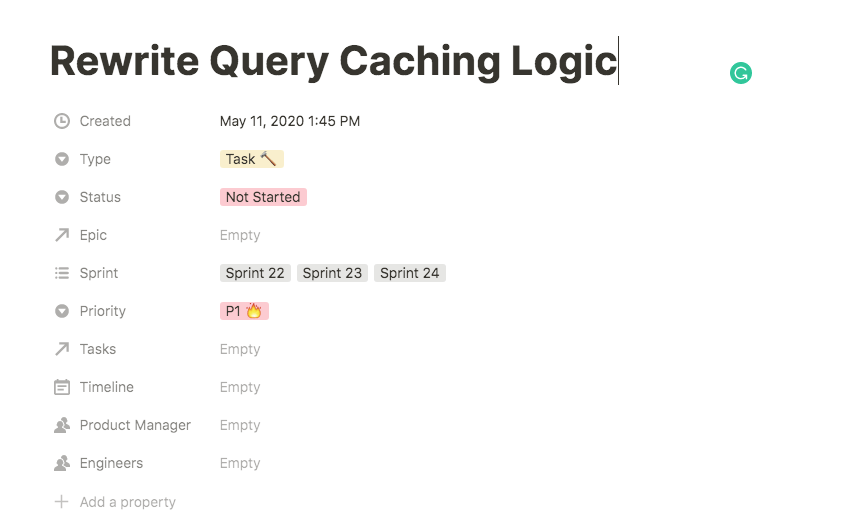How to Use Notion for Project Management
Notion comes equipped with a wide range of project management tools that let you assign and track tasks, create calendars and Kanban charts, and roadmap projects across disciplines and organization sizes.
Of course, one of Notion’s best features is that it’s very versatile. It’s not a collection of different apps the way Google’s G Suite or Microsoft’s Office 365 are. Instead, it’s a single highly modifiable application that can replace many of the tools we’re used to using and integrating, from a simple-but-functional CRM to a web clipper and note-taking tool that takes first place, ahead of Evernote.
In this post we’re going to explain how to use Notion for project management, but none of the instructions will make much sense if you don’t know the basics of how Notion works. So let’s start there.
How to use Notion: The basics
Even a basic overview of how Notion’s features work isn’t much use if you don’t know how Notion works. Like most tools it has its own language; unlike most tools, that language is both unusually intuitive and unusually non-restrictive. Notion is both easy to use and versatile.
Signing up to Notion
To sign up to Notion, go here.
Go to “Download” and select your OS. Notion has a desktop app for Windows and Mac which you can download for free. iOS and Android apps are available but can’t be downloaded directly; instead you have to message Notion who then send you a link. There’s no Linux app. The Web Clipper, also free, is in reality a Chrome extension that functions as a portal to all of Notion: every screenshot in this post was taken using only a browser.
Notion pricing
If Notion is free to download, what is its pricing like?
The standard freemium models restrict either features or usage. Notion restricts usage with its free plan and features with its entry-level personal plan.
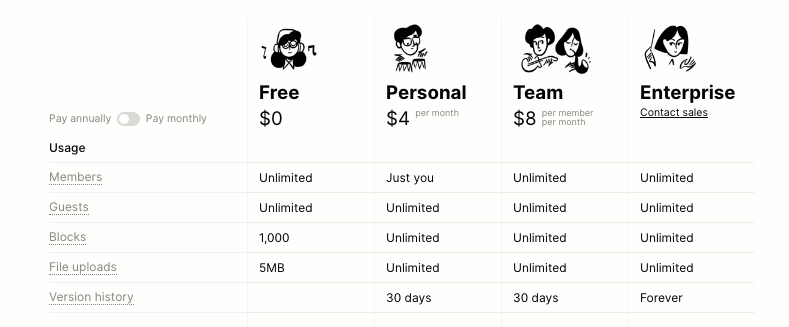
The Personal plan is restricted to a single individual while the Free plan is limited to 5MB of file uploads and 1,000 blocks.
If you’re using Notion for project management the best choice is to use the $8/mo Team plan ($10/mo if you pay monthly).
Blocks
Notion is built on blocks. A block is simply a lump of content, and Notion doesn’t care what kind. There’s a dropdown menu attached to each block that lets you turn it into any other kind of block, add a new block underneath it, or turn it into a page.
To open a new block:

Hit return or mouse over the block to see the block menu. Then you can choose from over 50 types of block:
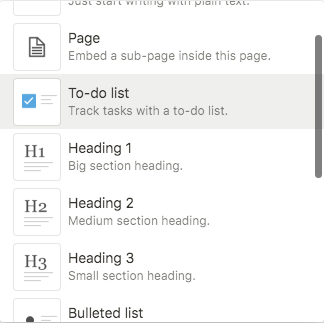
Pages
A page is the Notion equivalent of a document. It can be a page of text, a complete knowledge base, a Kanban board, or anything in between. You can embed or link one page inside another with a click.
To open a new page:
Click the + button in the Workspace menu to add a new page.

The new page menu gives you the option to choose a template, start a blank page without a template, or begin by creating one of Notion’s five types of database:
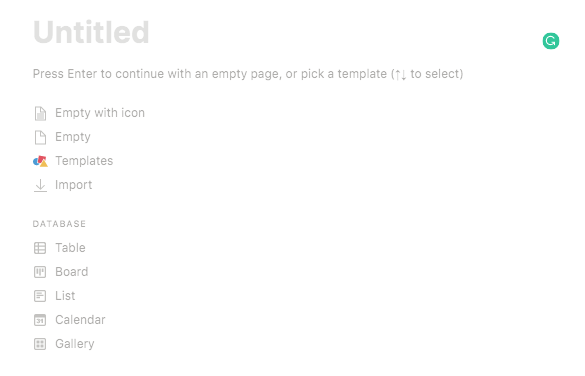
If you don’t see the template you need there’s a full template gallery and a community page dedicated to third-party Notion templates.
Databases
Notion creates and uses real databases, not just spreadsheets with the content actually stored elsewhere. The frontend is the backend, from this perspective. You can create five different types of databases in Notion:
- List
- Gallery
- Table
- Board
- Calendar
Now that you know the basics, let’s talk about what you came here for: how to use Notion for project management.
Notion Project Management: An overview
Notion gives you the tools you need to manage a project of any size and complexity, regardless of the project goal. The project management tools you’re used to using—Kanban boards, calendars, roadmaps, task lists—are all available with a single click inside Notion.
However, while Notion isn’t strictly speaking a bundle of apps, it does bundle functionality that you’re likely to want for certain purposes. For instance, the project management tools can be found in the block and page menus wherever you are in Notion. But you can also access readymade templates in Notion for project management elements.
Notion allows you to:
Build roadmaps
You’ll find roadmapping templates in the Design, Engineering, and Product Management sections of the Page menu.
Customize views
You can select which view of your data is most useful to you, cycling between calendar, table, kanban, and more for the same data. That’s because Notion creates a true database of the data you input and upload, not just a surface-level representation of one.
Bundle and expand
You can both bundle your work and expand it, depending on the situation. Each item in your database is its own page, any block can become a page, and you can nest link to pages inside any document. Your taxonomy is whatever you want it to be, with no internal system to learn or abide by.
Track tasks
To-do lists and Kanbans can be nested inside anything, including each other, to track tasks as granularly as you need.
Permissioned access
You can manage who has access to what or add individuals to cards, pages, events, to-do lists and anything else.
Collaborate
Notion lets you work together on the same page, communicate, set reminders, and message each other.
Security
Including quarterly independent security audits and SAML SSO.
Rich content
Notion lets you add or create rich content including embedded content, code and easily linked or uploaded images, videos, and more.
Let’s wrap up by looking at how to use Notion for some of the most common project management tasks:
- Building a roadmap
- Assigning and tracking tasks
- Collaborating
- Creating, acquiring, and sharing media
Building a roadmap in Notion
Readymade roadmap templates are available in several template menus. Here, I’m using the template from the Product Management menu.
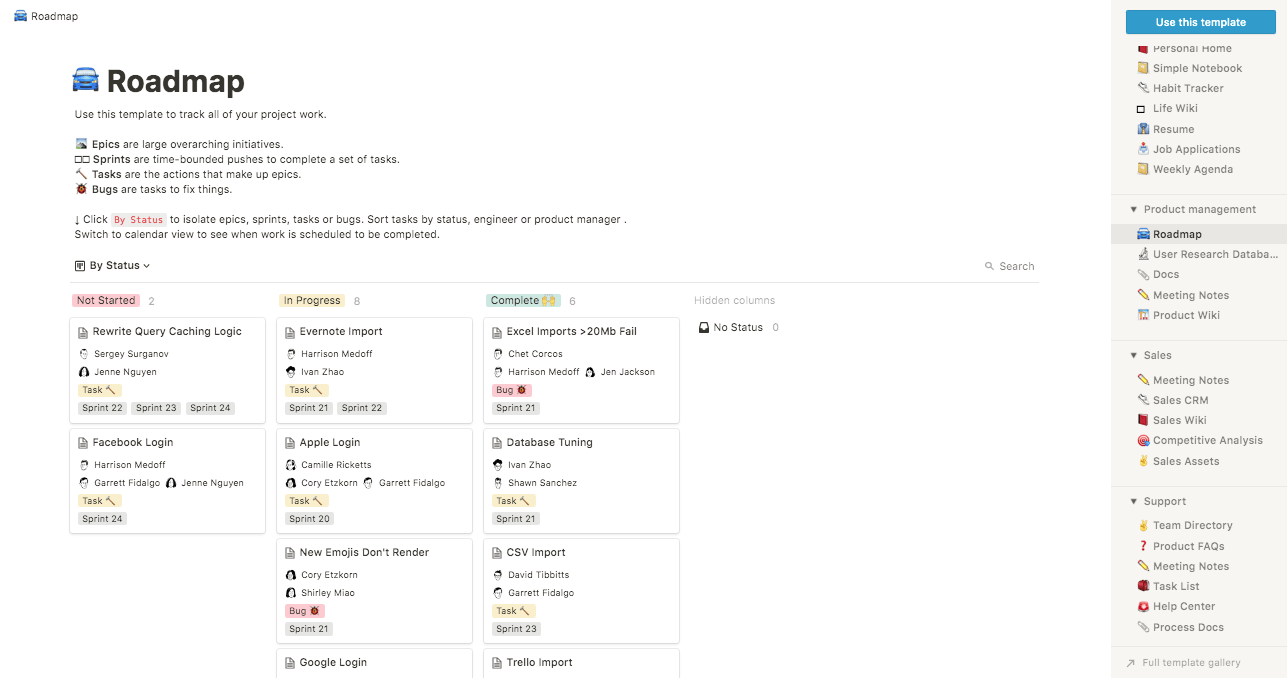
The basic layout is a Kanban board, optimized for product management projects.
There’s a key at the top, and each card has attributes and a status associated with it.
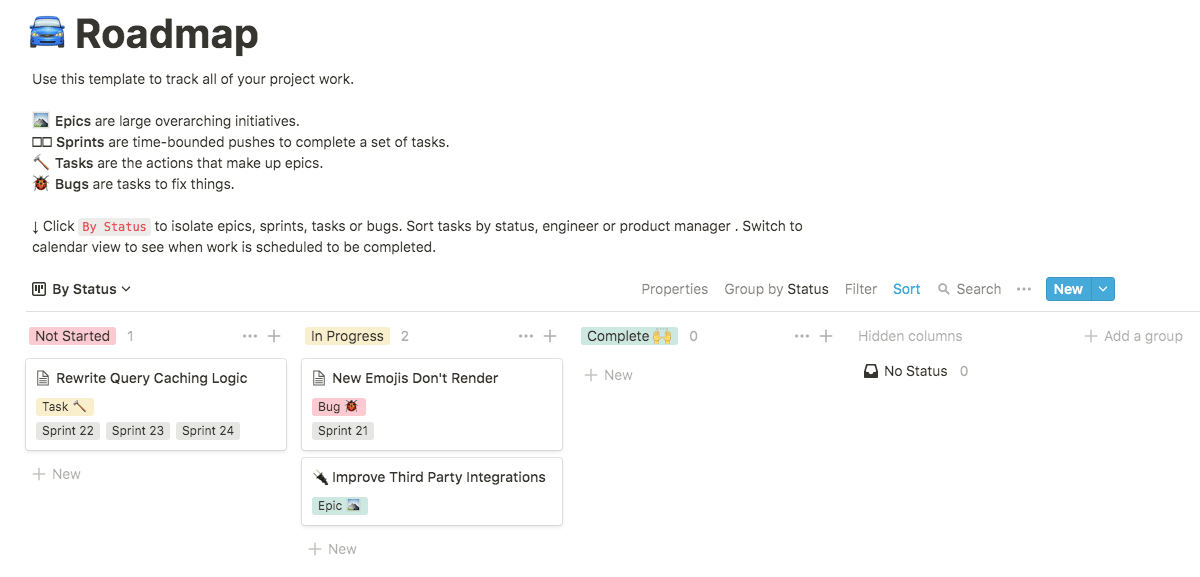
The back of each card contains a list of markers and a text description:
Each of these items—Sprint, Priority, Tasks, Timeline—are properties. You can add or customize any property through the “Add a property menu” or via the dropdown at the side of each property.
The back of a Notion Kanban card can contain anything, including another Kanban card, a calendar, or a video.

Here I’ve added a task list, a blank Kanban board inside the card itself, a dummy calendar embedded as a page and a Youtube video (this one) embedded in the card.
I did all this with the blocks menu in a few seconds. These features make Notion a serious competitor to Kanban-centric tools like Trello; in particular, Notion is better at nesting subtasks and tying together tools for collaboration, content creation, and embedding.
Assigning and tracking tasks in Notion
Notion will let you create a simple to-do list as a block inside any other page or database. You can also duplicate pages easily, meaning templating cards complete with content creation, editing and publication checklists, for instance, works just as well in Notion as in Trello.
Notion also has task list templates, in the Design and Support menus. We’re using the Design task list.

If this looks familiar from the project tracker, it should. It’s Notion’s Kanban tool, with a different set of properties.
Suppose you’re assigning a blog post to someone. You might have this card in your project tracker:
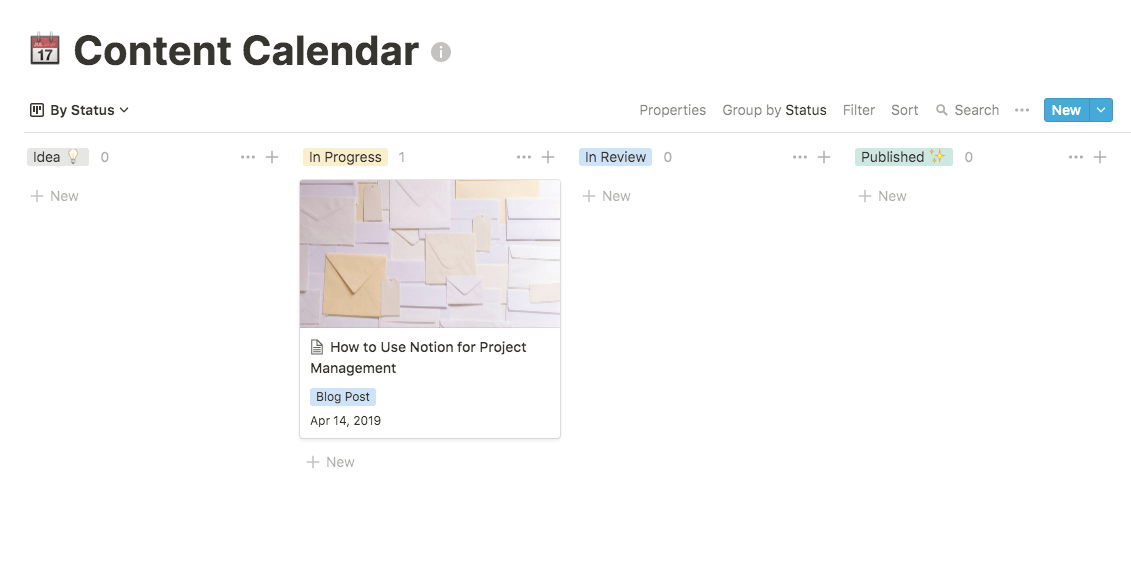
That’s a pretty empty content calendar, but it’s just a dummy.
On the back of that card, we can drop the tasks list. I’ve opened a new sub-page in the block menu, and chosen “Link to an existing page.”
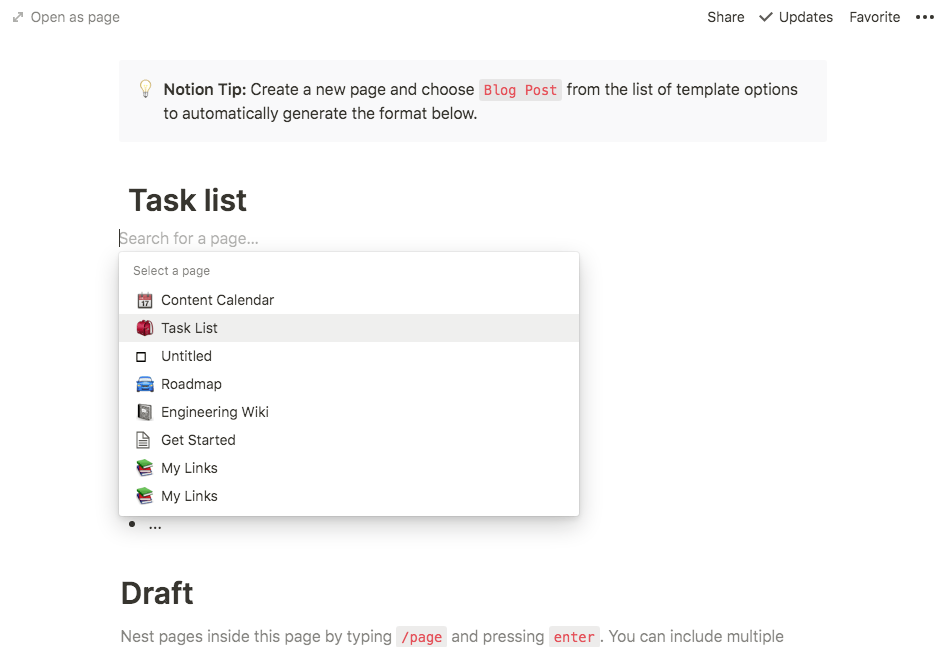
The back of the card now looks like this:
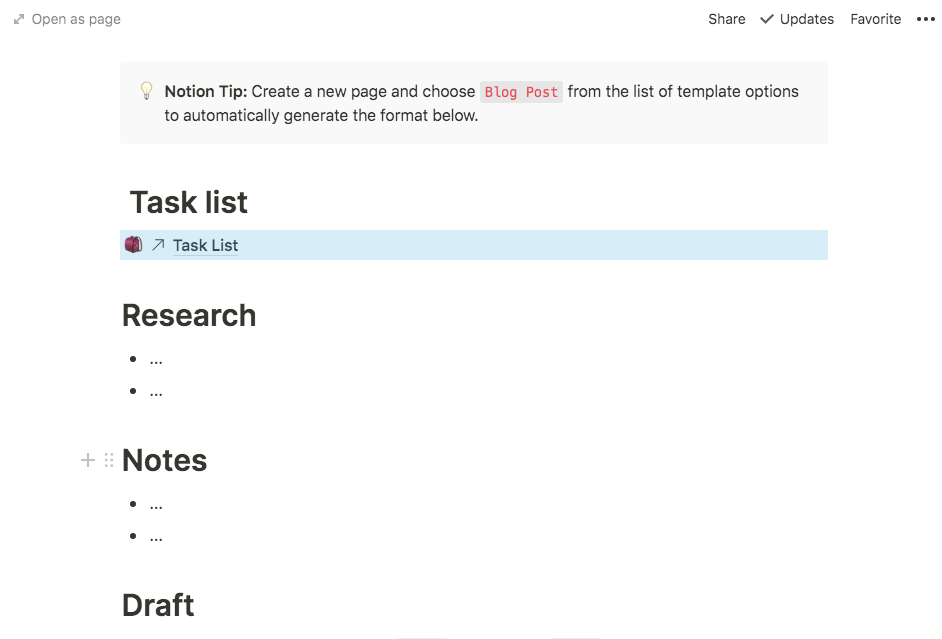
Click on Task List and it takes me to a separate page where there’s a task list for the specific tasks associated with this card.
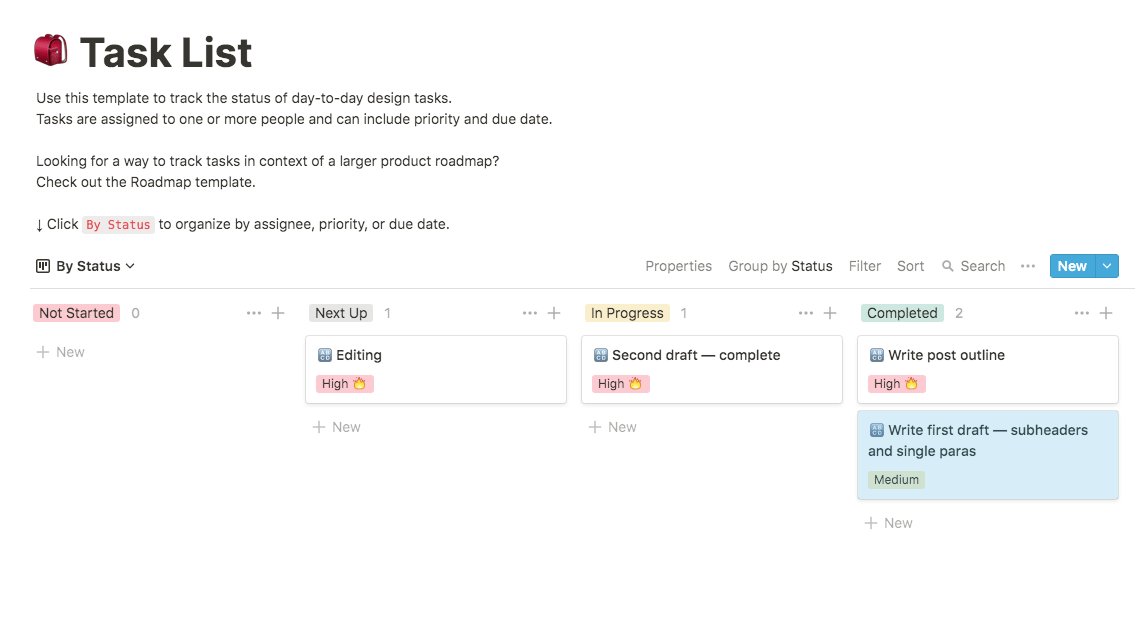
It’s a Kanban within a Kanban, letting me track the key stages of this specific deliverable broken down into tasks I can shuffle along the board as I complete.
I can control priority using the property menu inside the card:
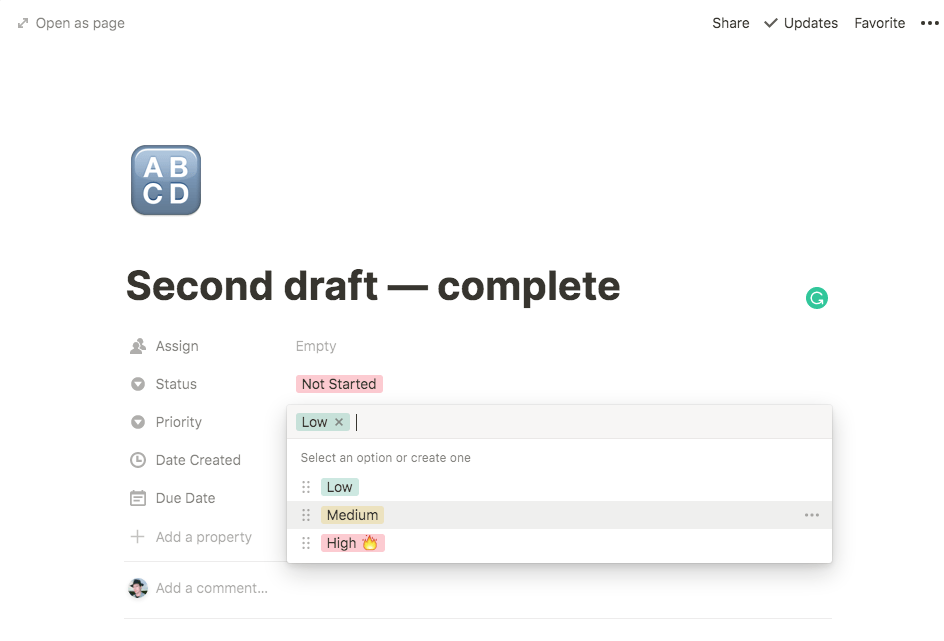
And I can break task stages down even further by nesting checklists inside the individual cards in this Kanban, which is itself nested inside the master Content Calendar board.
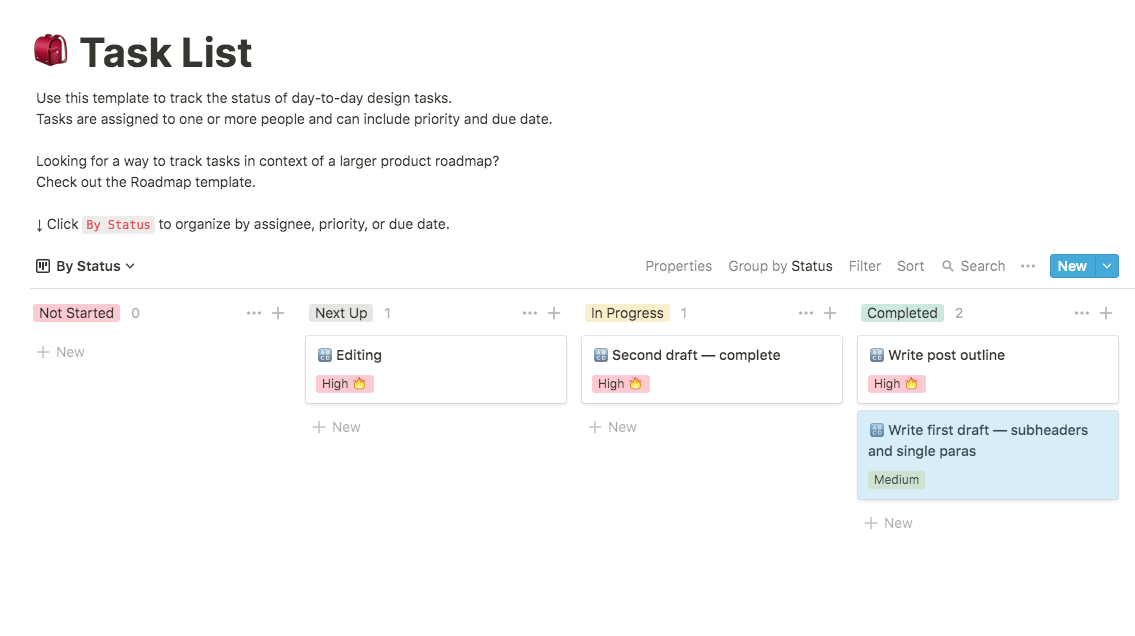
Assigning tasks is as simple as altering the other properties associated with a card. I can assign the whole blog post to someone by going back to the content calendar and finding them in the Assign menu:
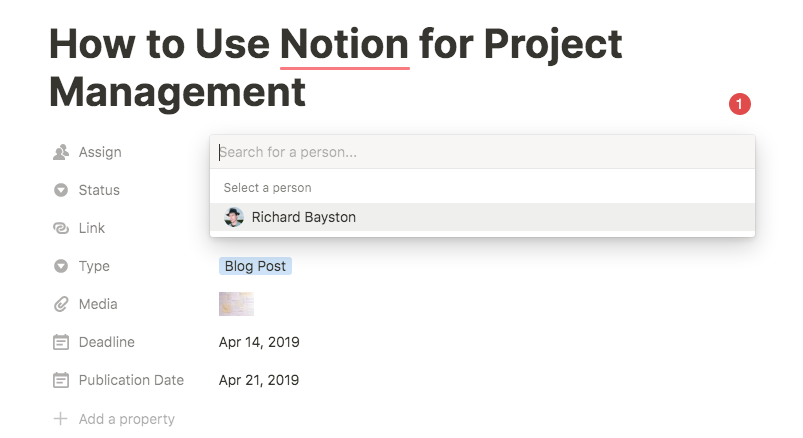
What if the person doing the editing isn’t the same person as the writer?
You can assign that specific task separately, just the same way you assign the main card:
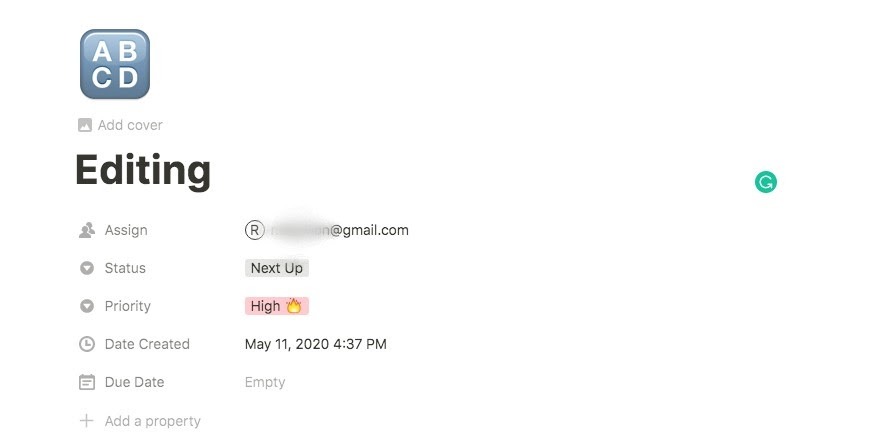
The writer will still be shown as the assignee for the whole card, but more people can be added to the master card by simply clicking “Assign.”
Collaborating in Notion
Collaborating is one of Notion’s greatest strengths.
Inside a document, you can comment on a block by choosing Comment from the actions menu, the square that appears when you mouse over a block.

Type your comment, and use the @ symbol to identify who you want to address it to.
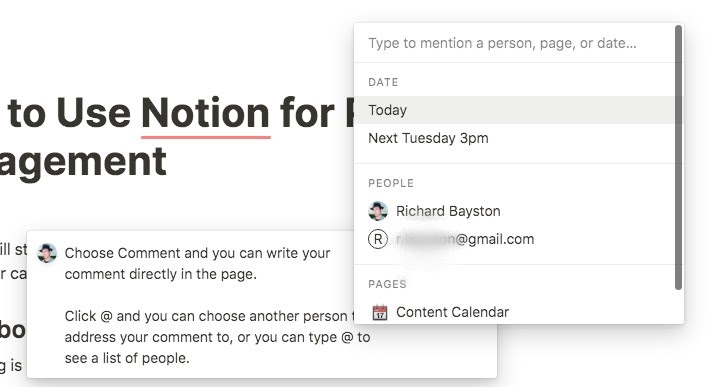
You can schedule when the comment is sent. When it’s sent, Notion will alert the person any way you’ve set it up to alert them. Emails are instant, and you can arrange alerts by push notifications to users of the mobile app too.
Any number of people can work together in real time on the same document or database—there’s no upper limit. Teammates’ avatars appear next to any blocks they’re editing or working on.
Content is not locked if someone else is making changes to it—collaborative changes on the same text or other blocks can be seen by all parties and the most recent addition will be visible to all.

If someone’s in the same page as you, click their avatar to jump to whatever they’re reading or editing.
Creating, acquiring, and sharing media in Notion
Scroll down the block menu in Notion and you’ll come to the Media section. Here you can add images from your computer or another source, like Drive; use a link; or select an image from Unsplash, a free stock image service.
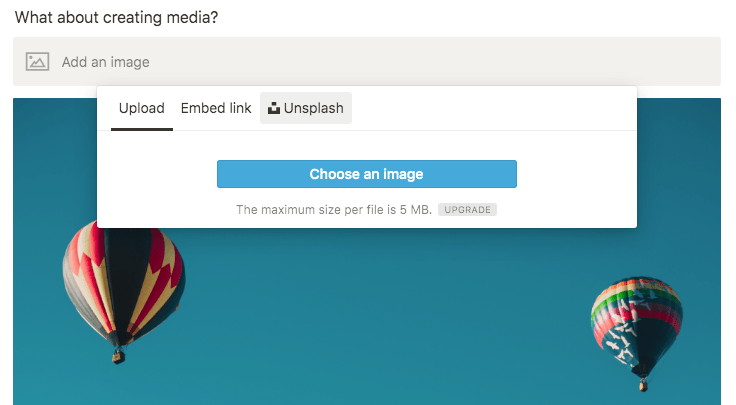
You can also embed links as visuals:

And you can embed videos, from Vimeo, Youtube, and other streaming sites.
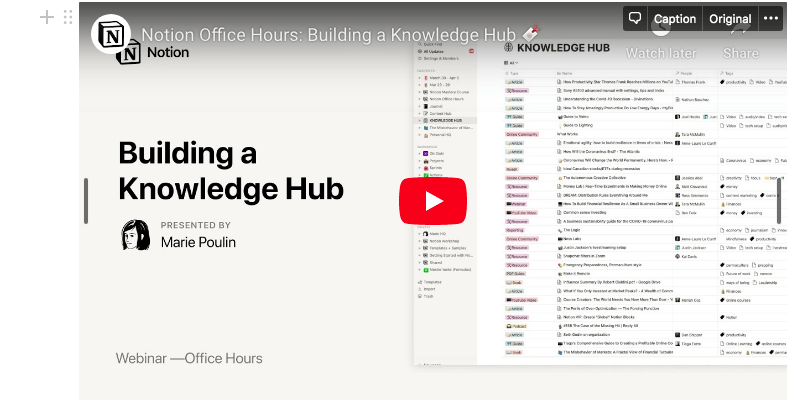
You can do this directly from the block menu.
Notion will let you embed audio too. You can embed from Spotify, Soundcloud, and other streaming services.
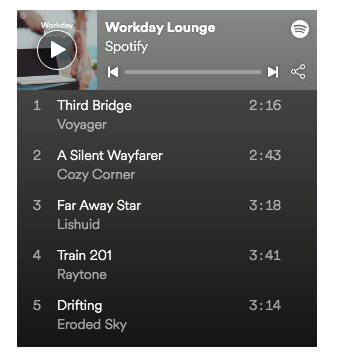
Spotify’s web player doesn’t work and Google Play Music embeds a link to the player, not the player itself. Other players embed truly and play inside the page.
You can also upload your own audio and Notion will create a generic player inside the page to play your track.

Finally, Notion will also let you embed code inside the page, as well as letting you upload and embed any file, from anywhere.
Media content can be shared through Notion the same way as anything else, though it can’t be turned into a page the way Notion blocks can be.
